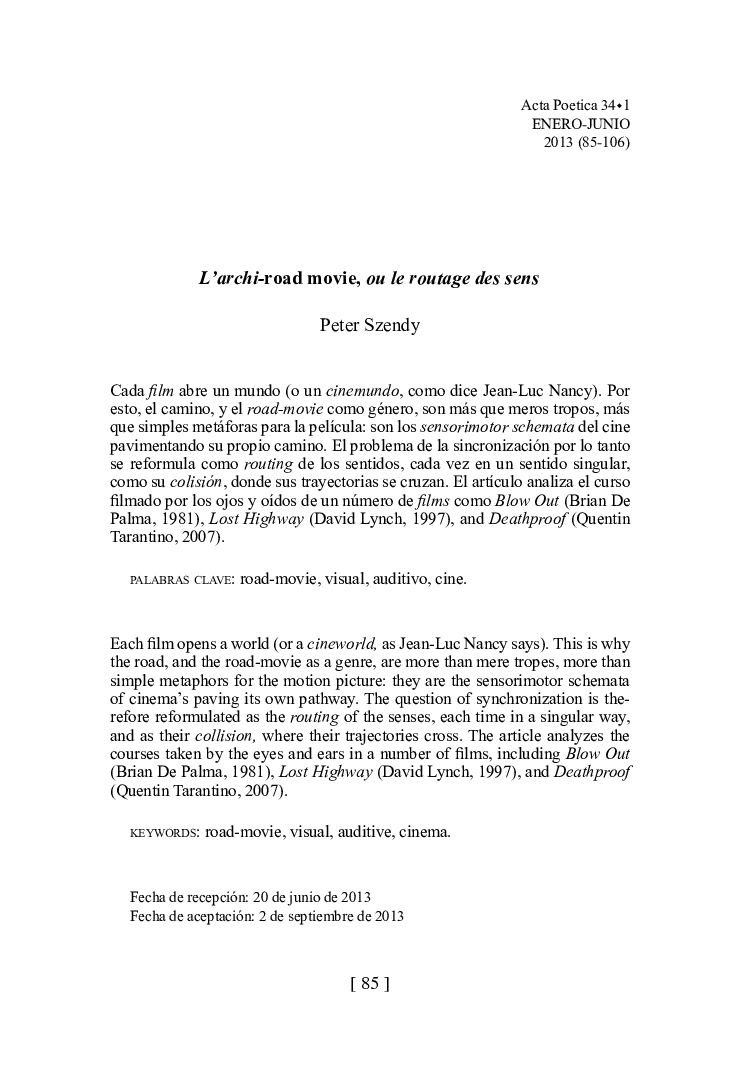| Article ID | Journal | Published Year | Pages | File Type |
|---|---|---|---|---|
| 1157467 | Acta Poética | 2013 | 22 Pages |
Cada film abre un mundo (o un cinemundo, como dice Jean-Luc Nancy). Por esto, el camino, y el road-movie como género, son más que meros tropos, más que simples metáforas para la película: son los sensorimotor schemata del cine pavimentando su propio camino. El problema de la sincronización por lo tanto se reformula como routing de los sentidos, cada vez en un sentido singular, como su colisión, donde sus trayectorias se cruzan. El artículo analiza el curso filmado por los ojos y oídos de un número de films como Blow Out (Brian De Palma, 1981), Lost Highway (David Lynch, 1997), and Deathproof (Quentin Tarantino, 2007).
Each film opens a world (or a cineworld, as Jean-Luc Nancy says). This is why the road, and the road-movie as a genre, are more than mere tropes, more than simple metaphors for the motion picture: they are the sensorimotor schemata of cinema’s paving its own pathway. The question of synchronization is therefore reformulated as the routing of the senses, each time in a singular way, and as their collision, where their trajectories cross. The article analyzes the courses taken by the eyes and ears in a number of films, including Blow Out (Brian De Palma, 1981), Lost Highway (David Lynch, 1997), and Deathproof (Quentin Tarantino, 2007).
